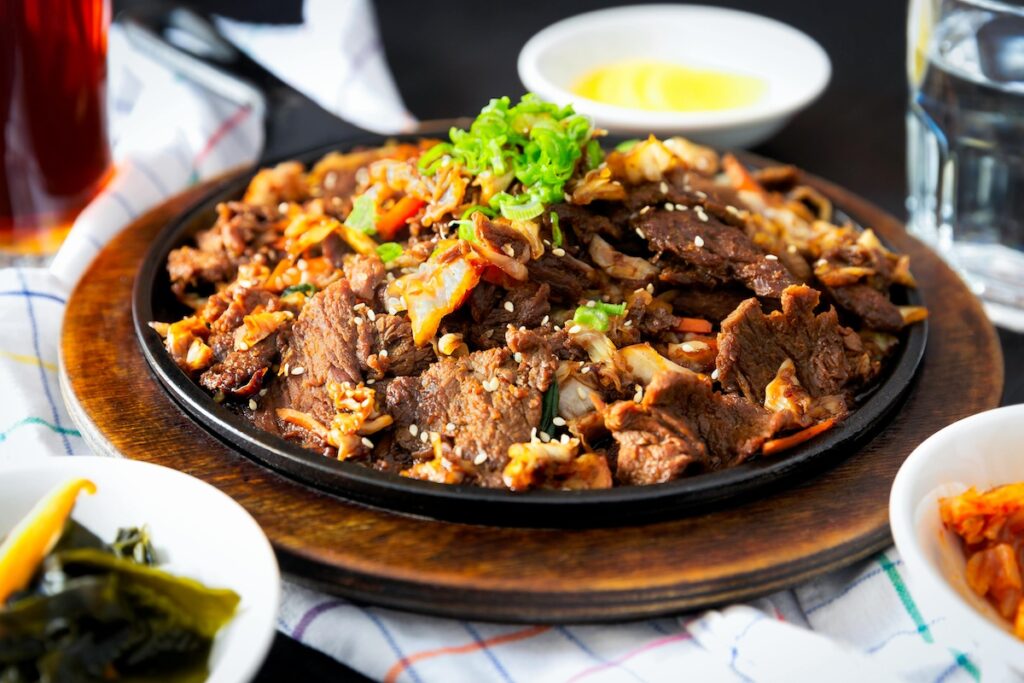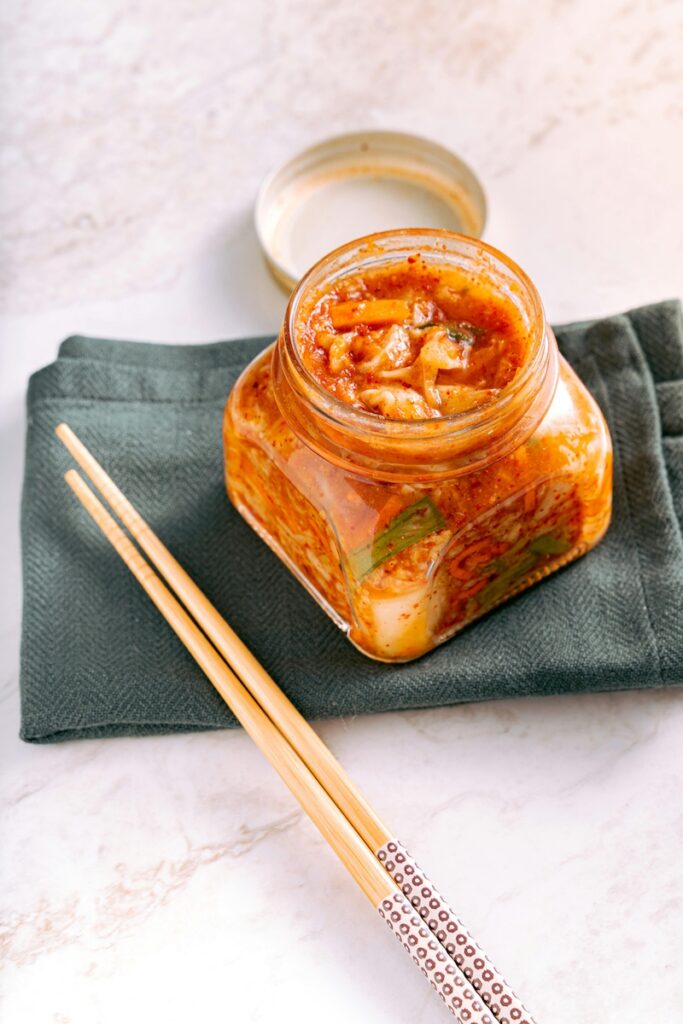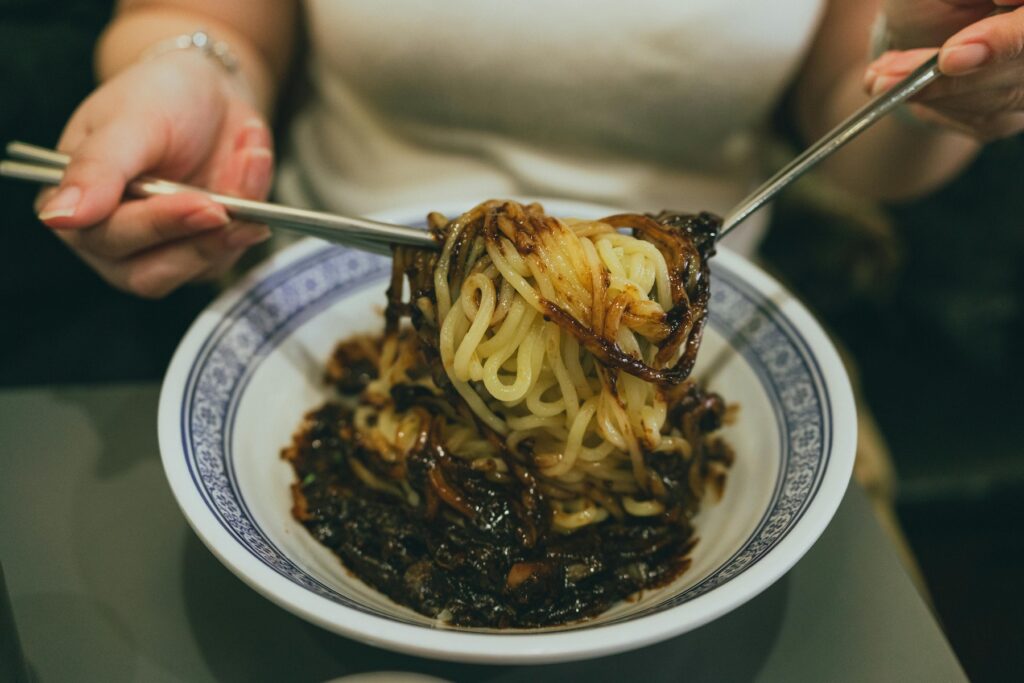When you visit Korea, you’ll quickly notice that meal times and portion styles can feel a little different compared to Western countries.
In many places, breakfast is light, lunch is quick, and dinner is the main event. In Korea, however, the approach is more balanced — and sometimes breakfast can be surprisingly hearty.
From the variety of banchan (side dishes) to the culture of having a drink with dinner, Korean dining habits offer a unique experience for foreigners.
1. Breakfast in Korea: More Than Just Toast and Coffee
In many Western countries, breakfast is a light meal — cereal, bread, or fruit — something quick before starting the day. In Korea, breakfast (achimsiksa) can be a full, cooked meal similar to lunch or dinner.
Typical Korean Breakfast
- Rice (bap): The staple food in most Korean meals.
- Soup or Stew (guk or jjigae): Such as soybean paste stew (doenjang jjigae) or seaweed soup (miyeok guk).
- Side Dishes (banchan): Kimchi, seasoned vegetables (namul), small servings of fish or meat.
- Eggs: Often in the form of a rolled omelet (gyeran-mari).
This may feel unusual for foreigners used to light breakfasts, but it reflects the traditional idea that the first meal should give enough energy for the day.
Even in modern times, some families still prepare a full table in the morning, especially for children or working adults.
2. Lunch: Quick but Satisfying
In Korea, lunch is often eaten outside, especially for office workers and students. It’s designed to be efficient but filling.
Popular Lunch Options
- Bibimbap: Rice with assorted vegetables, egg, and chili paste.
- Kimchi Jjigae: Kimchi stew served with rice.
- Kimbap: Seaweed rice rolls — portable and convenient.
- Korean BBQ Lunch Sets: Grilled meat served with rice and side dishes.
Unlike in some countries where lunch might be a small sandwich, in Korea it’s common to have a warm, cooked meal for lunch, even if it’s within a one-hour break.

3. Dinner: A Social Event
Dinner (jeonyeok) in Korea is often the most social meal of the day. While families enjoy dinner together at home, many Koreans also have dinner with friends or colleagues — and this often includes alcohol.
Dinner Culture
- Soju and Beer: Drinking is a big part of Korean evening culture. It’s common to have soju with grilled pork belly (samgyeopsal) or spicy dishes.
- Shared Dishes: Food is placed in the middle of the table for everyone to share, rather than individual plates.
- Second Rounds (Icha): After the main meal, groups may move to another restaurant or bar for more food and drinks.
For foreigners, the idea of multi-round dinners can be surprising, as it extends socializing beyond just eating.
4. The Concept of Banchan (Side Dishes)
One of the most unique parts of Korean dining is banchan — a variety of small side dishes served with every meal, usually free and refillable.
Common Types of Banchan
- Kimchi: Fermented vegetables, usually spicy and tangy.
- Namul: Lightly seasoned vegetables.
- Jeon: Pan-fried pancakes, often made with seafood or vegetables.
- Jorim: Braised dishes, like soy sauce-braised potatoes.
Foreigners often find it surprising that you don’t pay for these sides separately, and that the variety changes depending on the restaurant.
5. Portion Sizes: Balanced, Not Oversized
Compared to American or European restaurant portions, Korean meals are moderate in size but balanced with rice, soup, and side dishes.
The focus is on variety and nutrition rather than a single oversized portion.
For example:
- One serving of meat might seem small by Western standards, but it’s eaten with rice, vegetables, and banchan, making the meal filling.
- Shared dishes mean you try more flavors in one sitting.
6. How It Differs from Other Countries
- Breakfast: Heavier than Western breakfasts, often with rice and soup.
- Lunch: Still a hot meal, unlike the quick sandwiches common in the West.
- Dinner: Social and sometimes alcohol-heavy, with multiple courses or locations.
- Side Dishes: Unlimited variety instead of one fixed side.
For foreigners, these differences create a more communal and interactive dining experience.
Final Thoughts
Korean dining habits reflect a culture that values variety, sharing, and energy throughout the day.
Whether it’s a hearty breakfast to start the morning, a satisfying lunch, or a lively dinner with soju and endless banchan, Korean meals are as much about connection as they are about food.
If you’re visiting Korea, try experiencing all three meals in a day, Korean style — you’ll discover that the flavors, portions, and social atmosphere are just as important as the dishes themselves.

